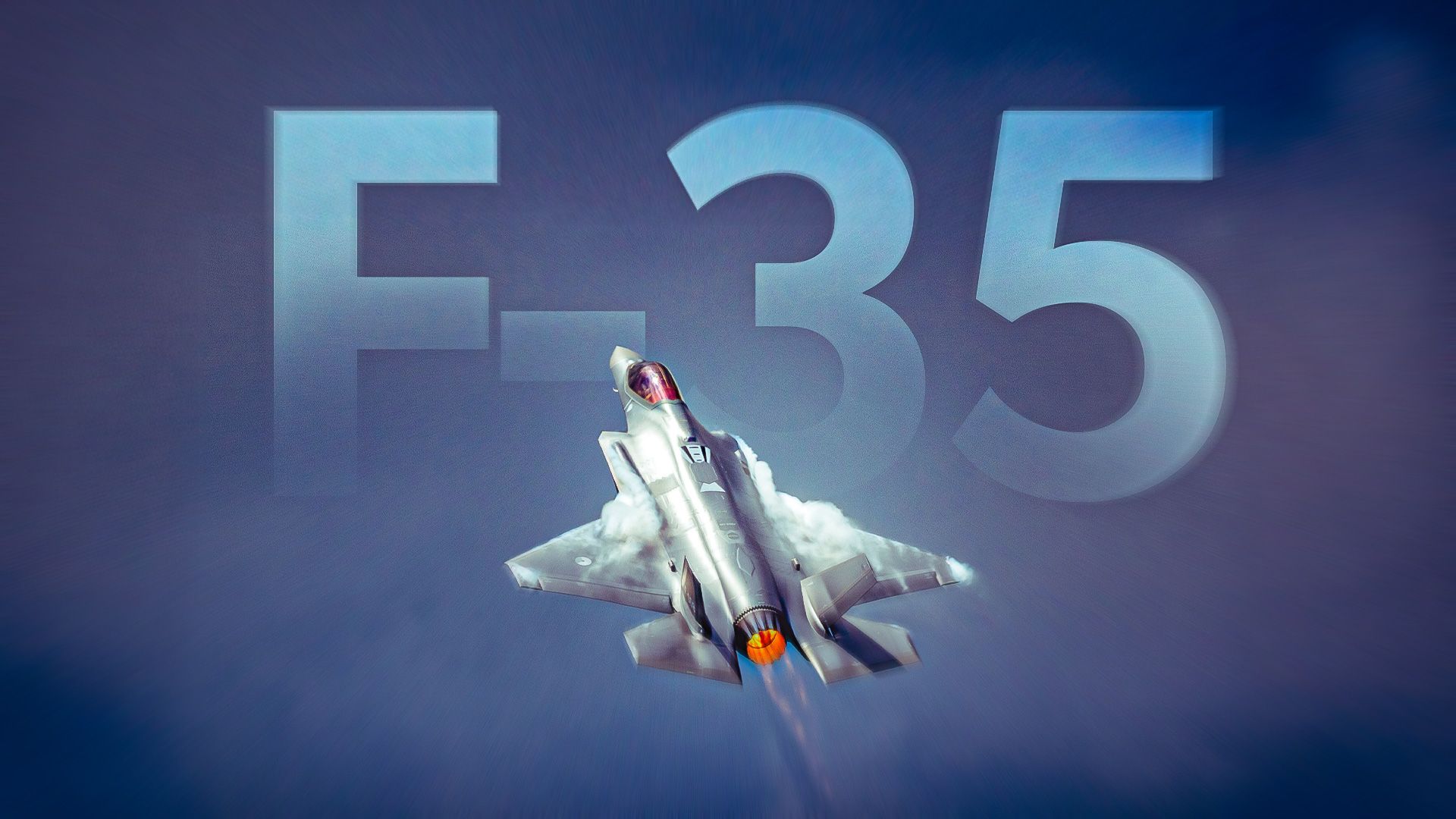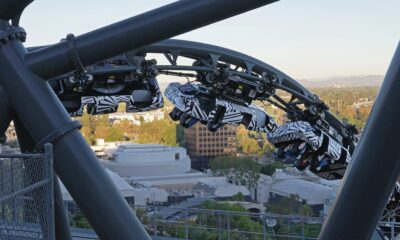World
Global F-35 Fleet Expands as Nations Strengthen Defense Ties

The F-35 Lightning II program continues to expand, with the United States, Japan, the United Kingdom, Australia, and Italy at the forefront. These nations, along with 20 others, have either received or ordered the fifth-generation fighter, totaling around 3,000 aircraft across three variants. Although the United States holds approximately two-thirds of the global fleet, partner countries are steadily increasing their numbers to enhance collective defense capabilities.
Initiated in 2001, the F-35 program has evolved into the largest defense project in U.S. history. The fighter jet, produced mainly in Fort Worth, Texas, also has final assembly lines located in Japan and Italy, specifically at Nagoya and Cameri, respectively. This rapid proliferation of the F-35 has significantly impacted modern air power dynamics.
Italy’s Strategic Role in the F-35 Program
Italy stands out as a significant player in the F-35 program, given its involvement in the Eurofighter Typhoon production chain. Rome joined the F-35 initiative early on, allowing Italian company Leonardo and Lockheed Martin to manage the European assembly line at Cameri Air Base. This facility not only assembles Italy’s jets but also manufactures wings for the global fleet and provides maintenance for other European nations.
On July 2, 2025, Italian Defense Minister Guido Crosetto announced plans to establish the first F-35 pilot training school outside the United States, to be located in Sicily. Crosetto stated, “The future is built not by limiting ourselves to defence, but by making defence a social, economic, and technological innovation engine.” This move underscores Italy’s commitment to being a key contributor in the F-35 program.
With a planned fleet of 60 F-35As and 30 F-35Bs, Italy’s air and naval forces embraced the F-35 following successful sea trials in 2019. Operational squadrons have already participated in various international exercises, enhancing their readiness.
Australia and the Royal Australian Air Force
Australia’s decision to procure the F-35 was driven by its need for self-reliance within an alliance framework. The Royal Australian Air Force (RAAF) values the F-35’s long-range intelligence, surveillance, and reconnaissance capabilities. The aircraft’s stealth features and sensor fusion integrate seamlessly with the RAAF’s existing platforms, enhancing operational effectiveness across the Indo-Pacific region.
Earlier this month, a significant joint exercise named Exercise Bushido Guardian 25 involved 25 F-35s from Australia, Japan, and the United States. Approximately 350 personnel from the U.S. Air Force, alongside 300 from the Japan Air Self-Defense Force (JASDF) and 100 from the RAAF, participated. This event marked one of the largest forward deployments of F-35s by the RAAF to date.
RAAF Wing Commander Mark Biele expressed enthusiasm for the collaboration, stating, “We are excited to take to the sky with aircraft from Japan and the United States, sharing experience and strengthening aviator-to-aviator relationships between our nations.” The Australian government, under the ANZUS treaty, committed to procuring 100 F-35A jets to replace aging aircraft and maintain operational capabilities.
The United Kingdom and Japan’s Growing F-35 Numbers
The United Kingdom has committed to a total of 138 F-35Bs and is currently negotiating for additional F-35As to replace retiring Eurofighter Typhoons. For the Royal Air Force (RAF) and the Royal Navy, these aircraft play multiple roles: enhancing multi-domain operations, boosting carrier capabilities, and strengthening interoperability with U.S. forces.
BAE Systems contributes significantly to the F-35 program, manufacturing 15% of the aircraft’s airframe and operating a maintenance facility at RAF Marham. The F-35 also serves as a technology demonstrator for future combat systems.
Japan’s acquisition of the F-35 is motivated by both geopolitical pressures and a desire for advanced technology. With increasing tensions in the region, particularly concerning China, Japan has ordered 105 F-35As and 42 F-35Bs, making it the second-largest operator after the United States. New squadrons are stationed at Misawa and Hyakuri, enhancing Japan’s air defense capabilities.
The recent delivery of F-35B models to Japan’s Self-Defense Forces signifies a pivotal shift in their operational strategy, further integrating advanced fighter technology into their maritime defense.
The Future of the F-35 Program
Despite its success, the F-35 program faces challenges, including delays and budget overruns. The Technology Refresh 4 (TR4) update is now projected to be completed by 2031, five years later than initially planned, with costs exceeding original estimates by at least $6 billion.
These setbacks have prompted the Pentagon to scale back the Block 4 modernization efforts, reducing the number of planned upgrades from 66 to 31. Some advanced capabilities hinge on a new engine core upgrade, which has been postponed until 2033.
As the global landscape evolves, the F-35 program remains crucial for international defense collaboration. With multiple nations investing in this advanced fighter jet, its role in shaping future air power and defense strategies is poised to grow even more significant.
-

 World2 weeks ago
World2 weeks agoGlobal Air Forces Ranked by Annual Defense Budgets in 2025
-

 World2 weeks ago
World2 weeks agoMass Production of F-35 Fighter Jet Drives Down Costs
-

 Top Stories2 weeks ago
Top Stories2 weeks agoNew ‘Star Trek: Voyager’ Game Demo Released, Players Test Limits
-

 Science2 weeks ago
Science2 weeks agoTime Crystals Revolutionize Quantum Computing Potential
-

 Top Stories2 weeks ago
Top Stories2 weeks agoDirecTV to Launch AI-Driven Ads with User Likenesses in 2026
-

 World2 weeks ago
World2 weeks agoElectrification Challenges Demand Advanced Multiphysics Modeling
-

 Entertainment2 weeks ago
Entertainment2 weeks agoFreeport Art Gallery Transforms Waste into Creative Masterpieces
-

 Lifestyle2 weeks ago
Lifestyle2 weeks agoDiscover Reese Witherspoon’s Chic Dining Room Style for Under $25
-

 Health2 weeks ago
Health2 weeks agoGavin Newsom Critiques Trump’s Health and National Guard Plans
-

 Lifestyle2 weeks ago
Lifestyle2 weeks agoLia Thomas Honored with ‘Voice of Inspiration’ Award at Dodgers Event
-

 Science2 weeks ago
Science2 weeks agoWaning Crescent Moon: What to Expect on October 17
-

 Entertainment2 weeks ago
Entertainment2 weeks agoFast & Furious Coaster Hits the Track at Universal Studios









